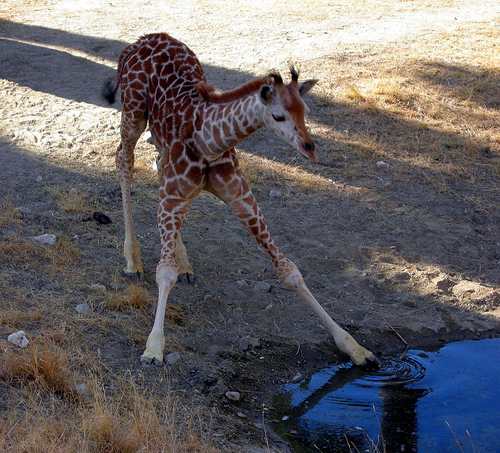 When I meet most people for the first time, they tend to notice I'm 6'1". Their first three questions are, without fail, "Did you play basketball?" "Did you play volleyball?" and "Do you model?"
When I meet most people for the first time, they tend to notice I'm 6'1". Their first three questions are, without fail, "Did you play basketball?" "Did you play volleyball?" and "Do you model?"
Y'all, stop asking. I lose my balance and am easily disoriented in brightly lit noisy places. There's a reason Adam started calling me Baby Giraffe, and it's not the length of my neck. I didn't even make the school's basketball team in middle school. I started into band and honors/AP classes instead.
Yes, I remember Michael Jordan's story. Yes, I wanted to be the first rocket scientist/WNBA All Star player when I was a kid. And yes, I now recognize that the two careers might be slightly incompatible.
At this point in the conversation, the other party is usually either laughing or edging away nervously. I've found that reactions to this line of questioning are really good for weeding out those who don't belong in my life. They wouldn't last long anyways.
One of the reasons I love social media is that it removes my height entirely from my social interactions. In the online world, my height isn't intimidating. It's not a factor available for judgment. I can be perfectly average until I prove myself witty or otherwise interesting.
It's also easier to make friends through the use of my brain in this medium because I am an ambivert. Though I have no fear of talking to new people and make friends fairly easily, I also require time to myself to remain fully functional. When I get overstimulated on social media, I can simply turn off my computer and the notifications on my phone.
Most people don't take that news as well in person. For some reason, telling people you need to go sit by yourself doesn't make many friends. That said, it's time for me to go drink a "Space Balls"-inspired beer and curl up with a blanket.
Title today from Flight of the Conchords "Most Beautiful Girl In The Room."
